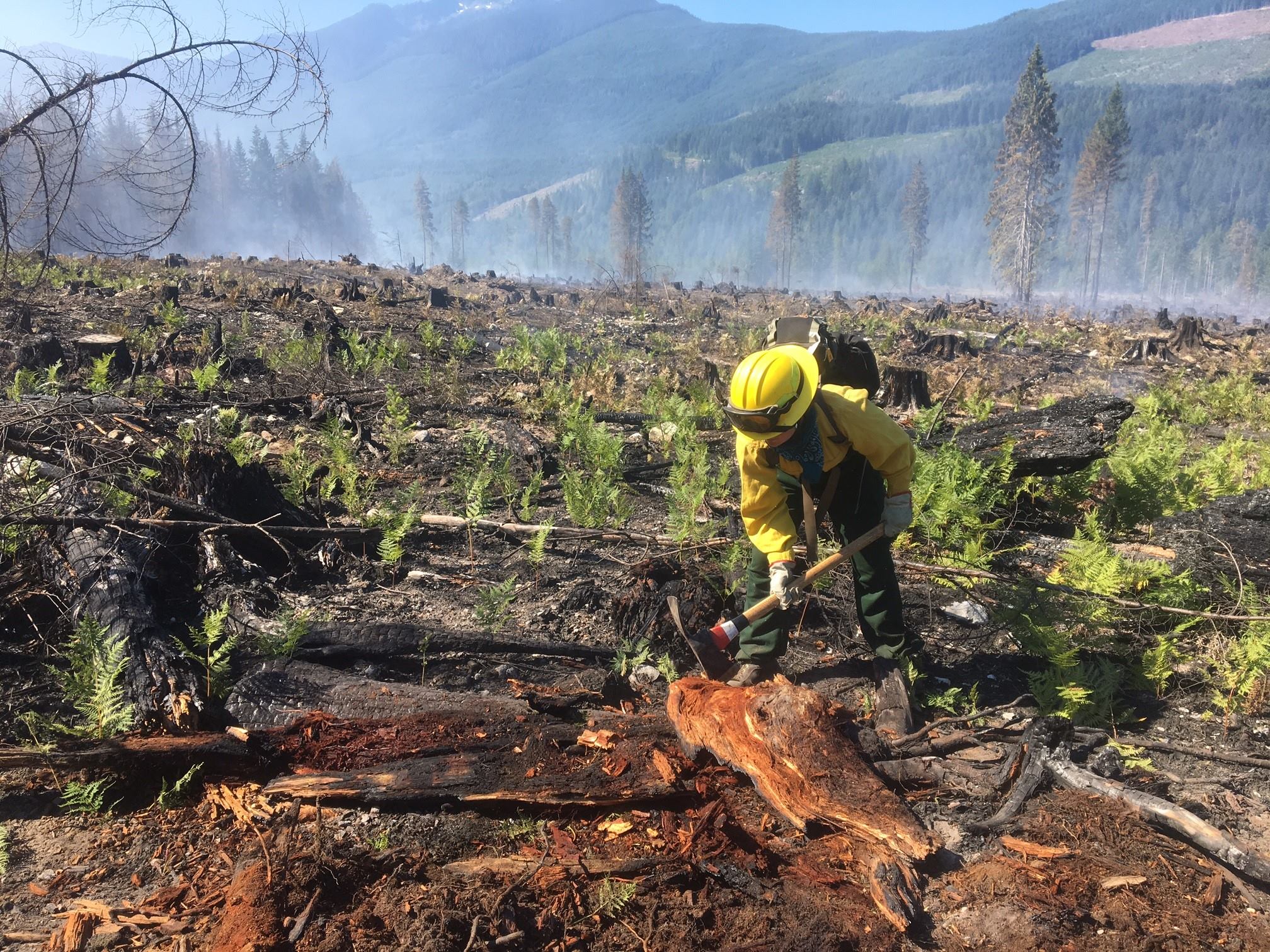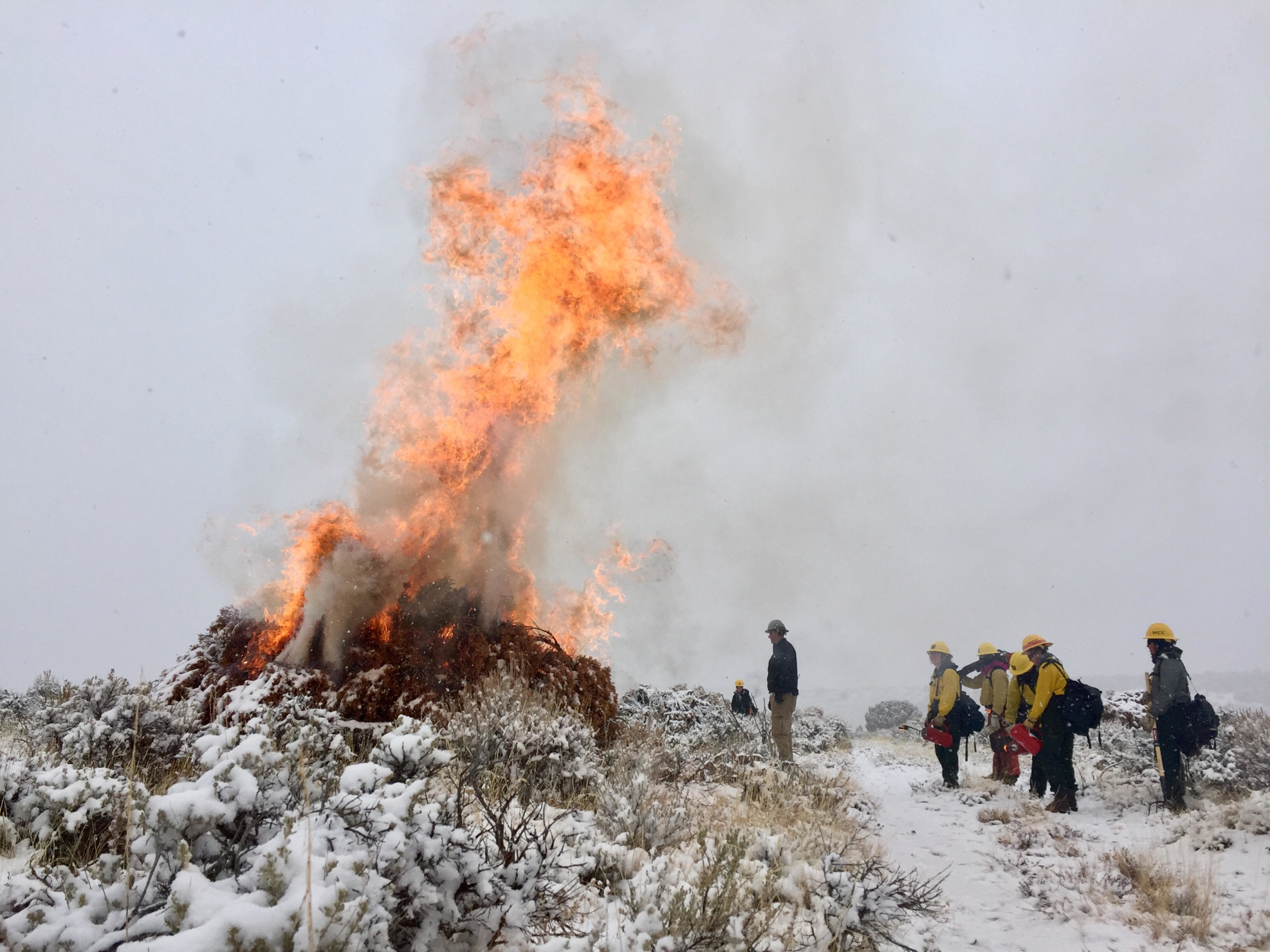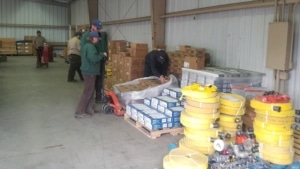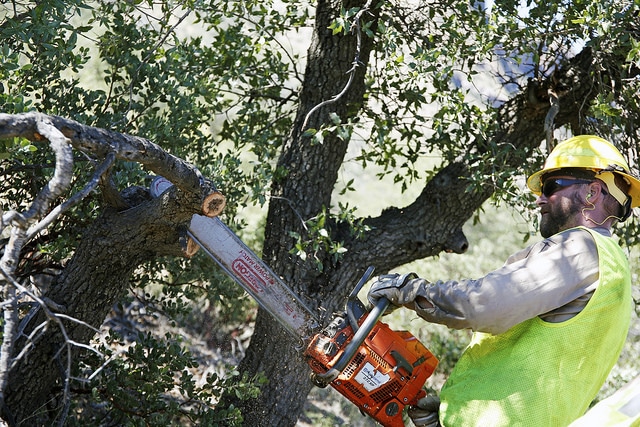
Over the past few weeks, hundreds of Corpsmembers and staff with the California Conservation Corps have served night and day in response to the Camp, Woolsey, and Hill Fires. Now that the fires are contained, Corpsmembers are still hard at work trying to prevent landslides in areas that have been stripped of vegetation. Some staff and Corpsmembers even continue to serve after losing homes, friends, and family in the Camp Fire.
In this difficult time, our thoughts are with the CCC and those affected by the recent fires.
We are grateful for the Corpsmembers across the country who not only respond to wildland fires, but help mitigate the threat of future fire events, and provide recovery support in the days, weeks, and months after the flames have subsided. Read below for an overview of some of the ways Corps engage in fire response, recovery, and mitigation.
Due to warmer temperatures, drier weather, and the spread of the mountain pine beetle – an insect that feeds on trees, killing off whole sections of forest – conditions across the West are fueling longer, costlier wildfire seasons. To meet this challenge, state and local Conservation Corps are training AmeriCorps members in the skills to not just fight wildfires, but help manage fire risk.
Last year alone, Corps responded to over 560 wildfires, a sharp increase over the 140 fires Corps addressed in 2014.
Through partnerships with federal agencies like the U.S. Forest Service (USFS) and Bureau of Land Management (BLM), as well as with state forestry agencies, several Corps across the country offer AmeriCorps members the opportunity to be certified as Type-I or Type-II firefighters. Type-II training leads to a kind of license called a “Red Card,” which allows individuals to serve on fires with federal agencies. Type-I firefighters might receive upwards of 80 hours of training in more advanced firefighting skills.

WCC responds to Thomas Lane Fire earlier this year. Photo from WCC Facebook page, courtesy Trevor Cassidy.
Washington Conservation Corps (WCC), housed within the state’s Department of Ecology, has 300 AmeriCorps members, all of whom have the opportunity to earn their Red Cards. So far this year, over two dozen Corpsmembers have been deployed to fires, often on “hand crews.” This means Corpsmembers come through after a fire to survey for heat, extinguish embers, and dig ditches to keep fires contained. In advance of the hand crew, a WCC wildland fire chainsaw crew will clear trees and branches.
“It’s really hard work,” said Brad Mahoney, a WCC AmeriCorps member. “You have to be mentally and physically ready. It’s pretty draining, but there is a certain satisfaction that keeps you coming back. Being able to take part in something that is so important is a really meaningful experience.”

California Conservation Corps, summer 2018.
Further South, the California Conservation Corps (CCC) operates a larger fire program. About 70 percent of the Corps’ 1,400 Corpsmembers will at some point work on a fire, either as camp support or as firefighters. CCC members have responded to all major California fires this year, including the recent Camp Fire, as well as the Mendocino Complex, Ferguson, and Carr fires.
Fighting fires on the front lines is incredibly important, but so is supporting fire camps. Every CCC Corpsmembers undergoes training in fire camp operations. A given fire camp can easily have upwards of 5,000 firefighters and support personnel, with activity happening 24 hours a day. CCC members are a critical asset, helping in the kitchen, managing equipment, dispersing ice, collecting trash, and monitoring the perimeters.
Meet Oscar Nuño, a CCC Corpsmember.
“A shift usually starts around 6:00 a.m. and they are camping out in tents. Because of the fire, it’s hot. It’s hot, hot, hot,” said Bruce Saito, Director of the California Conservation Corps. “… It’s 12 days in a row having to be tolerant, patient, understanding, and not letting petty arguments get in your way. You’re a team, you’re serving, you’re helping hundreds of thousands of people by the work you do.”
Another critical element of fire management involves mitigating the risk of future fires. Since 2015, Corps across the country have removed well over 70,000 acres of hazardous fire fuels, such as dead trees and overgrown brush. In January 2017, the California Conservation Corps launched a new program – Save the Sierras – through which AmeriCorps members cut down more than 15,000 dead trees in the Sierra Nevada mountains before the end of the year.
The non-profit Montana Conservation Corps (MCC) also does a significant amount of work clearing invasive species and fire fuels. MCC has several chainsaw crews, as well as two AmeriCorps programs that are more focused on fire and fuels management: their Veterans Green Corps and their Women’s Fire Crew. Members of both programs receive their Red Cards and S212 chainsaw certification, spending much of their time removing hazardous trees and, in the case of the Women’s Fire Crew, conducting controlled burns on USFS and BLM land.

Montana Conservation Corps and Southwest Conservation Corps members in the BLM Women’s Fire Corps program.
“They gain some serious skills that are empowering and teach them a lot about what they are capable of, and they gain skills that could launch them into a career…a lot of these folks are going to go on and get fire jobs or stay in natural resources, and that saw certification goes a long way,” said Adam Hein, MCC’s Central Divide Regional Director.
AmeriCorps service on chainsaw and fire crews can be an important step towards a job in wildland fire or resource management. Not only do Corpsmembers earn certifications, but they get to serve side-by-side with professionals at agencies like USFS and BLM. Colorado-based Conservation Legacy has produced numerous career wildland firefighters through their young adult and veterans crew AmeriCorps programs at Arizona Conservation Corps (AZCC), Southwest Conservation Corps (SCC), and Southeast Conservation Corps (SECC).
“My time spent crew leading for AZCC helped significantly in not only providing me with the skills and qualifications to obtain my position with the Forest Service. It prepared me for a lifestyle of living simply, performing arduous work for long hours, and perhaps most importantly, connecting with a crew to work towards a common goal,” said Olivia Gagliardi, an AZCC alumna and hotshot firefighter with Coconino National Forest.
Demand for wildland firefighters and saw crew members isn’t expected to slow down. Earlier this year, Congress created an annual fund of more than $2 billion to be accessed when the cost of wildfires exceeds the 10-year average. Agencies like USFS won’t have to divert as much funding to firefighting and, instead, can focus resources on mitigation. Congress also specifically directed USFS to address forest health issues – like beetle outbreaks – that increase the risk of fires. Indications suggest that, in the near future, AmeriCorps members could be engaged in more fuels management projects and, unfortunately, more fire response projects.
Did you know?
As of 2016, all Job Corps Civilian Conservation Centers offer wildland fire training. Through this program, Job Corps can annually deploy more than 1,000 Corpsmembers to fire emergencies and forest health projects.
- Learn more about the 2017 Project of the Year awarded to JCCCC for their Wildland Fire Program
In 2018, Southwest Conservation Corps and Montana Conservation Corps won a joint Project of the Year Award for their BLM Women’s Fire Corps pilot program.
Fire recovery takes years. Watch this video from 2013 about Texas Conservation Corps members helping rebuild infrastructure destroyed by a 2011 fire at Bastrop State Park. To this day, TxCC Corpsmembers serve at Bastrop.




































































